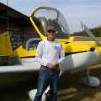Improved speed documented
-
Members Online
- 201er
- Jake@BevanAviation
- ElderWhitehead1
- acekng1
- Yetti
- warren.huisman
- AndreiC
- Hank
- Hamburglar
- Jim Peace
- Aerodon
- natdm
- ckb
- johnbkeck
- warbingtonmasonry
- Raymond J1
- Ragsf15e
- Bondo
- phrogpilot73
- slowflyin
- Ibra
- GeeBee
- Rotorhead
- lanejacobs84
- carguy4471
- richardbrochu27
- Adam_StPete
- rickseeman
- Niko182
- Epatry
- Parker_Woodruff
- dzeleski
- TheAv8r
- RB21654
- atpdave
- donkaye
- IFLYIFR
- Entropy
- cmorris
- Dick Denenny
- DXB
- Shadrach
- Echo
- ArtVandelay
- Larry
- Speed Merchant


Recommended Posts
Join the conversation
You can post now and register later. If you have an account, sign in now to post with your account.